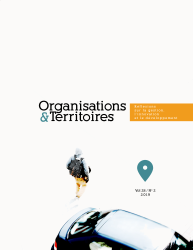Le baobab, un arbre emblématique dans le futur urbain du pôle de Diamniadio au Sénégal : marqueur spatial, représentation sociale et intégration paysagère
DOI:
https://doi.org/10.1522/revueot.v28n2.1048Keywords:
Baobab, city, landscapes, trees, Diamniadio SenegalAbstract
Integrating trees in a city has become very important in urban planning. Project personnel in new cities are attempting to include trees in their planning. The creation of the Diamniadio urban centre in Senegal is an example of landscape integration. This article focuses on the importance of baobab trees in the construction of this urban pole. Our hypothesis is that baobab trees are given special attention because they are considered a protected species (and are therefore one of Senegal’s two symbolic seals), but also because
they provide remarkable ecosystem goods and services. This study is based on inventory data of the baobab trees in the Diamniadio urban centre and on survey data (quantitative and qualitative). The in situ baobab tree inventory identified 333 trees randomly distributed within the urban centre. Despite urban growth, baobab trees still maintain their symbolic aspect that is engraved in the collective memory.



